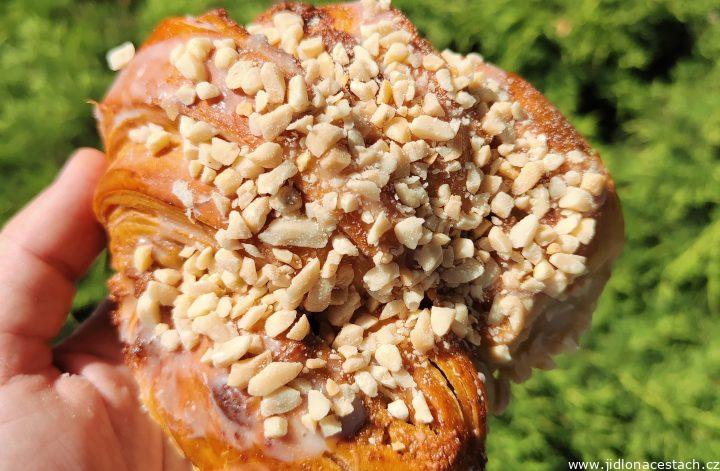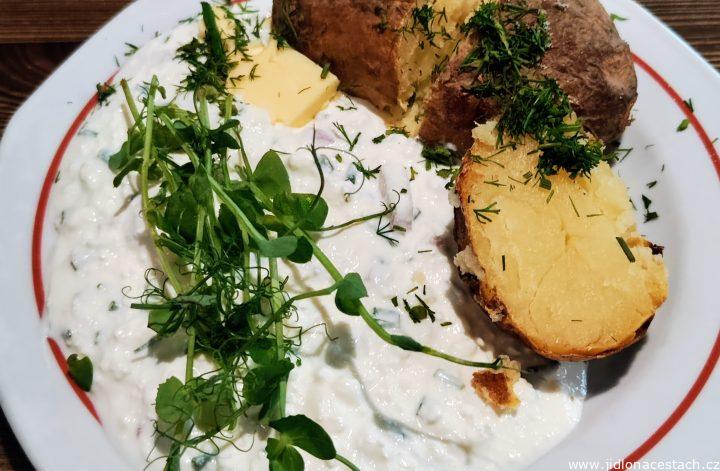What to Eat in Poznań
Poznań, one of the oldest and most significant cities in Poland, is the capital of the Greater Poland Voivodeship. The Greater Poland cuisine, including that of Poznań, is one of the most diverse and delicious in all of Poland.
Food in Poznań

If you plan to visit Poznań, I highly recommend setting aside plenty of time to explore the local cuisine. Be sure not to miss these 3 traditional specialties: “rogal świętomarcinski” (croissant filled with poppy seeds), “pyry z gzikiem” (potatoes with cottage cheese), or “szare kluchy” (potato dumplings).

What to Eat in Poznań
- Rogal świętomarciński. A traditional sweet pastry filled with white poppy seeds, specifically made for St. Martin’s Day (November 11th). Rogal świętomarciński is a protected designation and can only be made by certified patisseries in Poznań and its surroundings.
- Pyry z gzikiem. A traditional Greater Poland dish consisting of boiled or baked potatoes (pyry) served with cottage cheese mixed with onions and spices (gzik). This dish is closely associated with the Greater Poland region, with Poznań as its capital.
- Szare kluchy. Traditional Greater Poland dumplings made from raw and boiled potatoes, flour, and eggs. In Poznań, they are often served with cracklings and cabbage.
- Kaczka po poznańsku. Roasted duck in the Poznań style, served with red cabbage and potato dumplings. This dish is considered one of Poznań’s specialties.
- Szpekucha. A savory pie filled with bacon, onions, and cream, typical for the Greater Poland region, often served during Christmas markets in Poznań.
- Makówki. A traditional Christmas dessert from the Greater Poland region, consisting of broken bread or sponge cake soaked in milk and layered with poppy seeds, honey, and dried fruits.
- … and 30 more Polish dishes from the list: What to Eat in Poland.

Where to Eat in Poznań
- Pyra Bar. Probably the best place to go in Poznań for potato dishes. Here, I tried pyry with gzik, szare kluchy, and potato babka, and everything was perfect. Every week, they have a different specialty on the daily menu, and I tried the seasonal broad beans in butter.
- Schaboszczak od Dziadka. A local eatery where you simply must try their pork schnitzel (I personally recommend the one with the bone). Delicious food, huge portions, and quick service.
- Pączek w Maśle. Perfect pączki (Polish doughnuts), with a wide selection.
- Dobra Pączkarnia. Another great place for pączki. Also, a wide selection, located right on one of the main streets.
- Zapiex. A renowned place for zapiekanki. On weekends, they stay open late into the night.
- Bajgle Króla Jana. Excellent breakfasts featuring Polish bagels. I tried the “international” scrambled eggs with sun-dried tomatoes, spicy nduja sausage, parmesan, vegetable salad with seeds, and of course, a bagel (I chose the garlic-rosemary one). I could eat this every day for breakfast!
(All of these establishments accept credit cards, and except for “Dziadek,” you can communicate in English everywhere.)

Farmers’ Markets in Poznań
Poznań is home to several farmers’ markets offering fresh fruits, vegetables, flowers, and other products. The most famous include the centrally located Targowisko Świt, the historic market Rynek Łazarski, the prestigious Rynek Jeżycki near the city center, and Plac Wielkopolski, which serves not only as a marketplace but also as a significant city center. Most markets are open from Monday to Saturday, from 6 AM to 8 PM, and some have recently undergone revitalization.

During my last visit in July 2024, unfortunately, most vendors did not accept credit cards. So, bring cash for your purchases.

Poznań and Food-Related Museums
The city of Poznań boasts a surprisingly high number of unique museums dedicated to food.
Rogalowe Muzeum Poznania (St. Martin’s Croissant Museum)
For me, an absolutely essential culinary stop in Poznań is the Rogalowe Muzeum Poznania, which is dedicated to one of the most famous local specialties – the St. Martin’s croissant, known as rogal świętomarciński. This sweet pastry in the shape of a horseshoe is filled with white poppy seeds and sprinkled with crushed nuts. It is traditionally prepared for St. Martin’s Day (November 11th).
At the museum, you will learn everything about the history and tradition of preparing this popular pastry through an entertaining show which is also available in English.

Poznańskie Muzeum Pyry (Poznań Potato Museum)
The Poznań Potato Museum is divided into several sections, each offering a unique perspective on potatoes and their significance. Visitors can explore the history of potatoes, their journey from South America to Europe, and their impact on European cuisine and agriculture. Guided tours are in Polish and appeal to visitors of all ages.

National Museum of Agriculture in Szreniawa
Approximately 15 kilometers from Poznań lies the National Museum of Agriculture. This extensive museum focuses on the history and development of agriculture and food production in Poland. The exhibits cover a wide range of topics, from traditional farming practices to food processing and modern food technologies.
The museum is located on the grounds of a former estate, where visitors can explore both indoor exhibits and outdoor displays of agricultural machinery and livestock. Just before my visit, for example, a Polish beer festival took place here!

For me, Poznań is a city with simple but exceptionally tasty cuisine, focused especially on potato dishes.
I am sure that you will fall in love with Poznań cuisine just as much as I did.
Enjoy your food in Poznań!
🇵🇱 Discover the magic of Polish cuisine with my newsletter! Sign up and receive a free comprehensive guide that reveals all the secrets of Polish dishes and drinks.





